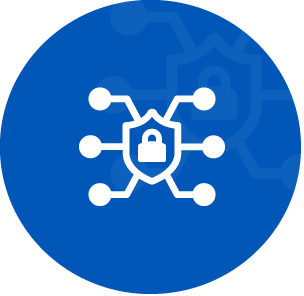-
Student Benefits
- ISACA is a globally recognized entity and the certifications it offers are accepted worldwide by employers
- IT professionals who have earned ISACA certificates generally earn salaries of $100K+ per year (Indeed)
- 63% of organizations see a greater need for legal/compliance professionals
-
Enterprise Benefits
- Employees with ISACA certifications ensure that your organization is guided by professionals who implement up-to-date solutions
- Showcases the IT Governance standard of your organization
- ISACA certified employees are ones you can trust with handling the sensitive technical needs of your business enterprise

Learning Tree ISACA Certification Program Features
-
Preferred, Official Training Provider
-
Access to Official ISACA Content
-
Certification Exam Vouchers Included
-
Learn from ISACA Certified Instructors
ISACA Certification Training Courses
How to Get ISACA Certified
Authorized training aligned with the ISACA guidelines
|
ISACA Certification FAQs
The ISACA Exam Candidate Information Guide provides valuable information regarding exam day rules and information as well as exam dates and deadlines.
You can earn CPEs through ISACA by attending webinars, conferences, or training events, or even volunteering and mentoring.
Continuing Professional Education (CPE) credits are necessary for maintaining certifications awarded by ISACA, a global professional association for IT governance, risk management, and cybersecurity professionals.
Maintaining ISACA Certifications
Certified individuals must earn a minimum of 20 CPE hours each year. Over a three-year period, individuals must accumulate at least 120 CPE hours. Attendees can learn about maintain their certifications by visiting the ISACA site here:
ISACA Continuing Education Information
Eligible Learning Tree Training
ISACA will award CPE credit for Learning Tree training and webinars as long as the event attended relates to your certification's Job Practice Areas and you supply documentation of completion/attendance.
Attendee Process for Obtaining ISACA CPEs
Attendees should log into their ISACA account and following the instructions on the ISACA site about How to Report CPEs.
Approval Policies
There is no pre-approval process with ISACA. ISACA will award CPE credit for Learning Tree training and webinars as long as the event attended relates to your certification's Job Practice Areas and you supply documentation of completion/attendance.
With this accreditation, ISACA anticipates that significant opportunities for CISAs, CRISCs, CISMs and CGEITs will continue to present themselves around the world.
ISACA certification exams consist of 150 multiple choice questions that cover the respective job practice areas, created from the most recent job practice analysis. Candidates have up to 4 hours (240 minutes) to complete the exam.
ISACA offers multiple professional certifications, including the CISA, CRISC, CISM, CGEIT, and CDPSE. Each of these certifications lends credibility to information systems practitioners.









